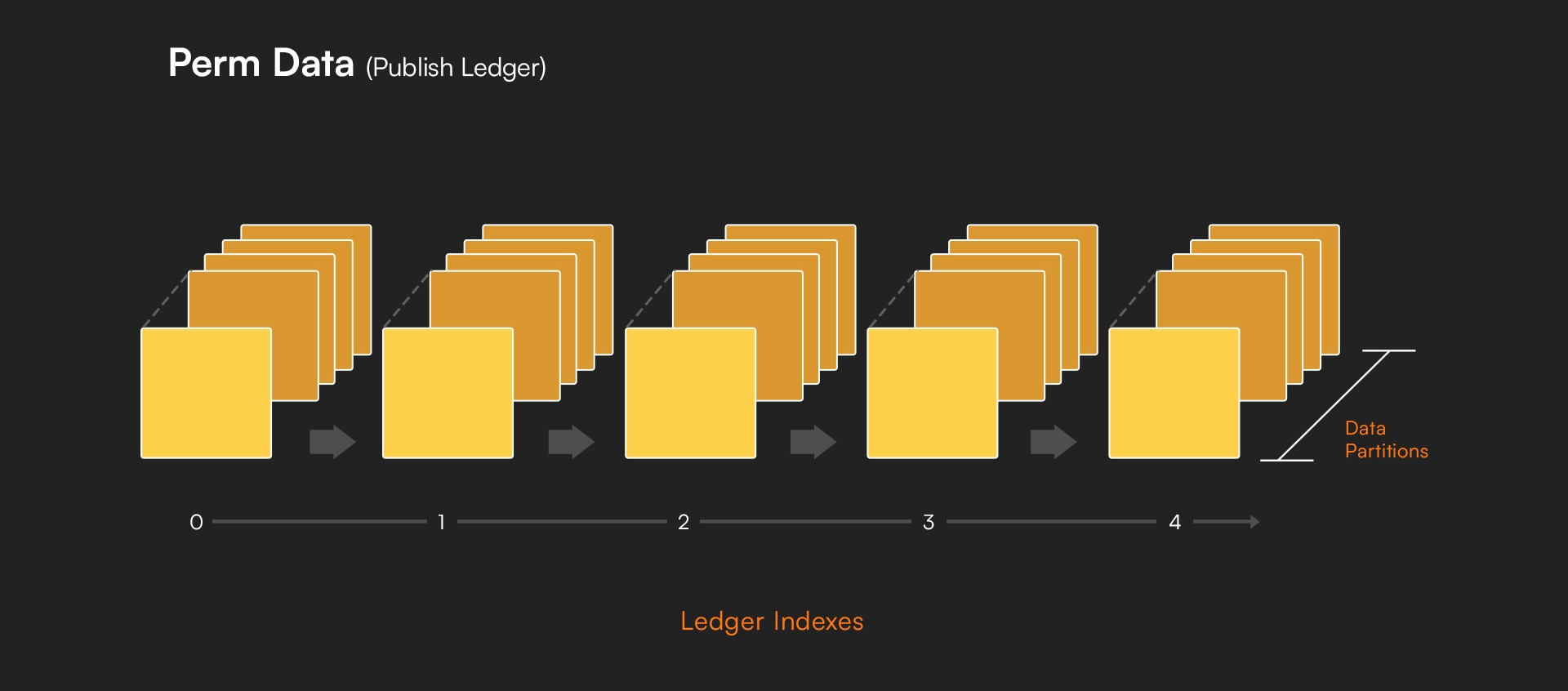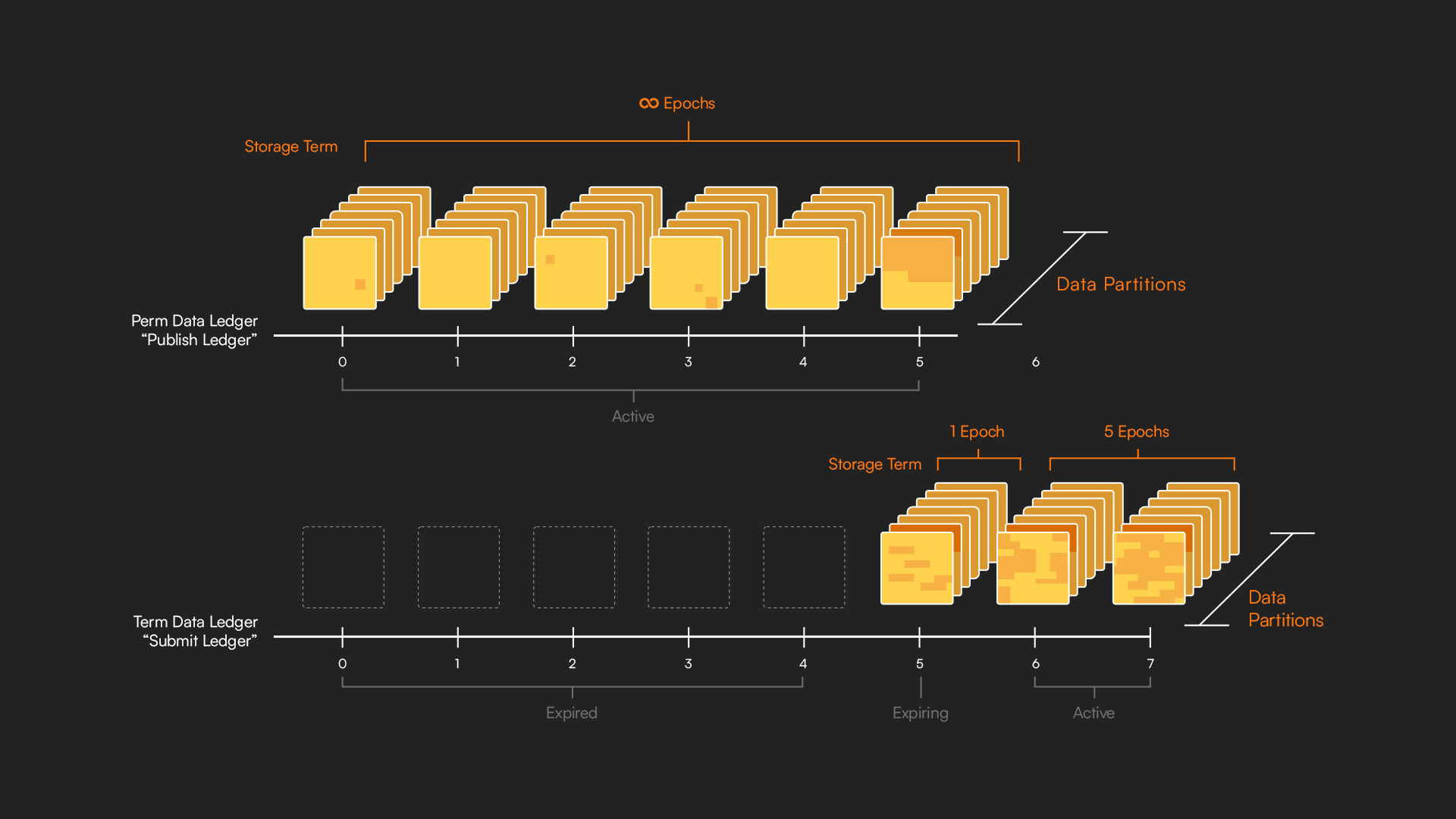Ledgers
Irys innovates on the traditional blockchain model by implementing multiple ledgers on a single chain:
- Transaction History: Like most blockchains, Irys maintains a record of transactions in its blocks.
- Data Ledgers: Unlike traditional models, Irys stores associated transaction data in separate ledgers.
This separation of transactions from their data enables Irys to scale and manage large volumes of information efficiently.
The process works as follows:
- Blocks are produced at regular intervals.
- These blocks contain storage transactions with digital fingerprints of data.
- Space is reserved in a ledger for the actual data, which can be uploaded over subsequent blocks.
- The digital fingerprint in the original transaction is used to validate the later data upload.
This approach allows Irys to handle larger amounts of data than traditional single-ledger blockchains, while maintaining data integrity and validation.
Alongside these ledgers, Irys maintains two blocklanes:
- An execution blocklane for value transfers and smart contract interactions.
- A storage blocklane for data storage transactions.
These ledgers have different storage terms, and users specify their intended ledger when posting a data transaction.
Permanent Data (Publish Ledger)

The Publish Ledger contains only data provably uploaded to the network, backed through the Submit Ledger system. This results in a Publish Ledger without holes, enabling reliable data retrieval for use within Irys’s Programmable Data smart contract computations.
This flagship ledger is replicated across 10 geographically distributed miners who have made economic commitments through staking and pledging.
Term Data Ledgers

Term Data ledgers store "temporary" data with defined expiration periods. Irys uses the word “term” to describe these ledgers as it makes a commitment to store the data for a specific storage term.
At launch, Irys will implement a single term-ledger called the Submit Ledger, with plans to offer more term options based on community feedback.
Submit Ledger
Transactions are first posted to the Submit Ledger, giving users a 5 epoch window to upload associated data. If the data isn’t posted during that time, the space reserved for it expires.
This serves two purposes:
- Is used to provide temporary onchain data.
- Addresses the challenge of verifying data publication for smart contract execution.
Users needing temporary onchain data can post their transactions to the Submit Ledger and let them expire at the end of the term. As upload fees are based on the length of the storage term, this offers significant financial advantages to users who don't require permanent storage.
If the data is posted, miners provide receipt proofs. Once enough proofs are collected, the data is promoted to the Publish Ledger, where smart contracts can access it.
Data expires after 5 epochs if not uploaded, however the associated transaction header is part of the blockchain's immutable ledger.
The combination of Submit and Publish ledgers enables Irys to make commitments about uploaded data and fairly apply slashing penalties to miners who fail to store assigned data. This leads to high-quality, verifiable onchain data suitable for smart contract operations.